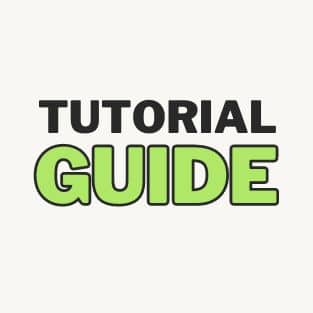Introduction
Self-help books have been a staple in the literary world for decades, offering guidance, inspiration, and advice on a variety of topics ranging from personal development to mental well-being. Over the years, the genre has evolved significantly, with new authors, innovative approaches, and diverse perspectives shaping the landscape of self-help literature. In this paper, we will explore the demonstrable advances in English within the self-help book genre, focusing on what is currently available in the market.
The Rise of Diverse Voices
One of the most significant advancements in self-help literature has been the rise of diverse voices and perspectives. In the past, self-help books tended to be dominated by a few select authors, predominantly White males, who presented a limited range of experiences and viewpoints. However, in recent years, there has been a growing recognition of the need for greater diversity and representation in the genre.
Today, readers can find a wide array of self-help books written by authors from marginalized communities, exploring issues such as race, gender, sexuality, and disability. These books offer unique insights and perspectives that resonate with a broader audience, providing valuable guidance and support to individuals from all walks of life. Examples of self-help books by diverse authors include “The Body Is Not an Apology” by Sonya Renee Taylor, “The Life-Changing Magic of Tidying Up” by Marie Kondo, and “The Gifts of Imperfection” by Brené Brown.
Furthermore, the rise of diverse voices has also led to a greater emphasis on intersectionality within the self-help genre, with authors exploring the complex intersections of identity and experience. This intersectional approach acknowledges the interconnected nature of various social and personal factors, such as race, class, gender, and sexuality, and how they can impact an individual’s well-being and personal growth.
In addition to fostering greater inclusivity, the diversification of voices in self-help literature has also expanded the range of topics and themes covered in the genre. Authors are now addressing a broader spectrum of issues, such as mental health, trauma, relationships, and social justice, offering readers a more comprehensive and nuanced understanding of self-improvement and personal development.
Embracing Empathy and Vulnerability
Another notable advancement in self-help literature is the increasing emphasis on empathy and vulnerability in the writing and teachings of authors. Traditionally, self-help books have been criticized for promoting a one-size-fits-all approach to personal growth, often setting unrealistic expectations and standards for readers.
However, in recent years, there has been a shift towards a more compassionate and empathetic style of writing, with authors sharing their own struggles and vulnerabilities in a more authentic and relatable manner. This approach not only fosters a deeper connection between author and reader but also encourages individuals to embrace their own imperfections and vulnerabilities as part of the human experience.
Authors such as Brené Brown, Glennon Doyle, and Elizabeth Gilbert have been instrumental in promoting the value of vulnerability and authenticity in self-help literature. Through their books and teachings, they encourage readers to embrace their flaws, failures, and insecurities as opportunities for growth and self-compassion.
 Moreover, the emphasis on empathy in self-help books has also led to a greater focus on mental health and emotional well-being. Authors are now addressing the psychological and emotional aspects of personal development, offering practical strategies and tools for managing anxiety, depression, stress, and other mental health challenges. This shift towards a more holistic and compassionate approach to self-help literature has been instrumental in destigmatizing mental health issues and promoting a more inclusive and supportive dialogue around well-being.
Moreover, the emphasis on empathy in self-help books has also led to a greater focus on mental health and emotional well-being. Authors are now addressing the psychological and emotional aspects of personal development, offering practical strategies and tools for managing anxiety, depression, stress, and other mental health challenges. This shift towards a more holistic and compassionate approach to self-help literature has been instrumental in destigmatizing mental health issues and promoting a more inclusive and supportive dialogue around well-being.
Incorporating Evidence-Based Practices
The integration of evidence-based practices and research findings into self-help literature is another notable advance in the genre. While self-help books have traditionally been criticized for lacking scientific rigor and empirical support, there has been a growing trend towards incorporating evidence-based strategies and interventions in recent years.
Authors are now drawing upon the latest research in psychology, neuroscience, and behavioral science to inform their teachings and recommendations. This evidence-based approach ensures that the advice and insights presented in self-help books are grounded in sound scientific principles and research evidence, enhancing their credibility and effectiveness.
For example, books such as “Atomic Habits” by James Clear, “The Power of Now” by Eckhart Tolle, and “The Four Agreements” by Don Miguel Ruiz leverage research findings from fields such as habit formation, mindfulness, and cognitive-behavioral therapy to provide readers with practical tools and strategies for personal growth and well-being.
In addition to incorporating evidence-based practices, authors are also citing reputable sources and studies to support their claims and recommendations, further enhancing the credibility and trustworthiness of their work. This commitment to scientific rigor and empirical support not only distinguishes self-help books from pseudoscientific and unproven remedies but also empowers readers to make informed choices and decisions about their personal development journey.
Utilizing Technology for Personalization and Accessibility
The advancement of technology has also played a significant role in shaping the evolution of self-help literature, making it more personalized, interactive, and accessible to a wider audience. With the rise of digital platforms, e-books, audiobooks, podcasts, and online communities, readers now have greater flexibility and convenience in accessing self-help resources and support.
Authors and publishers are leveraging technology to create a more immersive and engaging reading experience for readers, incorporating multimedia elements, interactive exercises, and personalized recommendations to enhance the effectiveness of their teachings. For example, apps such as Headspace and Calm offer guided meditation sessions and mindfulness practices, while platforms like Audible and Scribd provide access to a vast library of Self-help audiobooks (git.4angle.com) and podcasts.
Moreover, the use of technology has also democratized the self-help genre, making it more inclusive and accessible to individuals from diverse backgrounds and communities. Digital platforms and online communities enable readers to connect, share experiences, and seek support from like-minded individuals, fostering a sense of community and belonging in the self-help space.
Furthermore, technology has also enabled authors to reach a global audience and disseminate their teachings and insights on a larger scale. Through social media, websites, and online courses, authors can connect with readers from different parts of the world, creating virtual communities and support networks that transcend geographic boundaries.
Looking Ahead: Future Trends and Developments
As self-help literature continues to evolve and adapt to the changing needs and preferences of readers, several key trends and developments are likely to shape the future of the genre. Some potential future advancements in self-help books include:

- Personalized and adaptive content: With the advancement of artificial intelligence and machine learning, self-help books may become more personalized and adaptive, tailoring content and recommendations based on individual preferences, goals, and needs.
- Collaboration and co-authorship: Authors may collaborate with experts from various fields, such as psychology, neuroscience, and wellness, to offer readers a more comprehensive and interdisciplinary approach to personal development.
- Integration of immersive technologies: Virtual reality, augmented reality, and other immersive technologies may be incorporated into self-help books to create more engaging and interactive experiences for readers.
- Emphasis on sustainability and eco-consciousness: Authors may explore themes of sustainability, eco-consciousness, and environmental well-being in their self-help books, reflecting growing concerns about climate change and ecological sustainability.
Conclusion
In conclusion, the evolution of self-help books in English has been marked by significant advancements and innovations that have transformed the genre into a more inclusive, empathetic, evidence-based, and accessible form of literature. The rise of diverse voices, the emphasis on empathy and vulnerability, the integration of evidence-based practices, and the utilization of technology have all contributed to a more dynamic and impactful landscape of self-help literature.
As self-help books continue to adapt to the changing needs and preferences of readers, it is essential for authors, publishers, and readers alike to embrace these advancements and engage with the genre in a critical, reflective, and open-minded manner. By staying informed, discerning, and connected, we can all benefit from the valuable insights and guidance that self-help literature has to offer in our personal growth and well-being journey.



